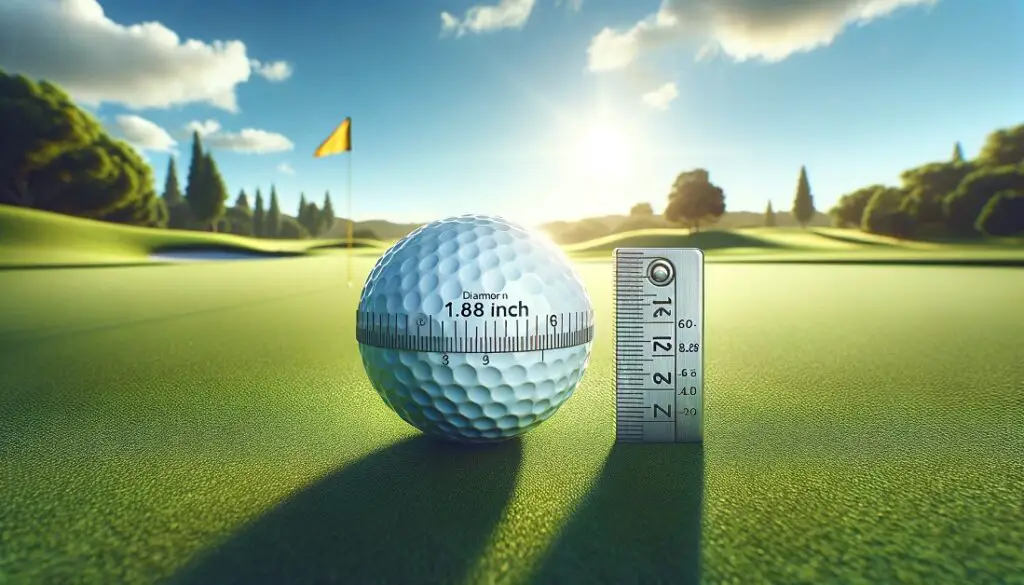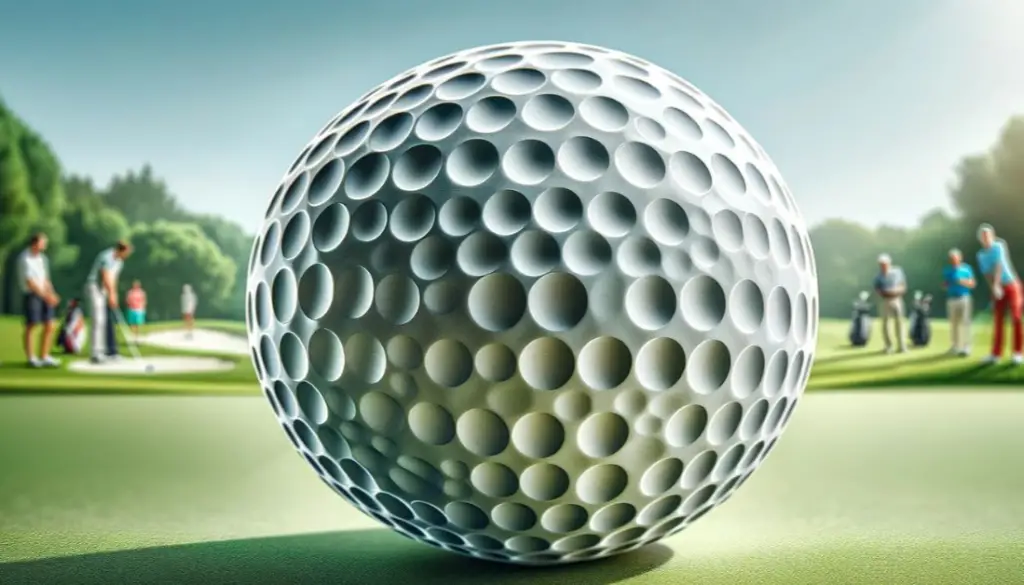Learning how to hit a draw in golf can be a game-changer for many players. If you’ve ever found yourself frustrated with a slice or unable to shape your shots the way you want, you’re not alone. In fact, over 60% of amateur golfers struggle with slicing the golf ball, leading to lost distance and accuracy.
Hitting draw—a controlled shot that curves gently from right to left for right-handed golfers—can help you gain more control over your golf game and increase your distance. Imagine consistently start hitting the ball where you want it to go, avoiding hazards, and setting yourself up for easier approach shots. This is the difference a draw can make.
In this guide, you’ll learn what a golf draw is, why it’s important, and most importantly, how to hit draw golf to improve your game. Whether you’re a beginner or a seasoned player looking to refine your skills, these guides will help you take your golfing to the next level.
Table of Contents
ToggleWhat Is A Draw In Golf?
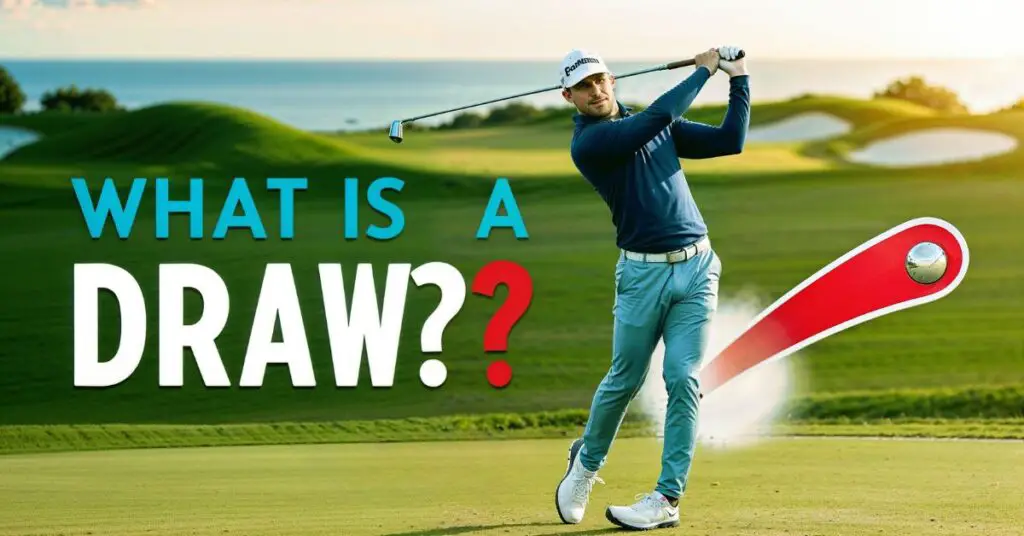
A golf drawing shot in golf is a light shot that curves a very slight right-to-left for right handed players. It is the complete opposite of a fade, in which the ball curves from left to right for right-handed golf players. A golf draw can be one of your strongest and most frequently used shots as it normally provides more distance and accuracy as compared to a straight shot or a fade.
The ball curves back to the left after beginning slightly to the right of your target when you hit a draw, probably landing on or close to your desired target. By putting a particular spin on the golf ball through the trajectory and angle of your clubface at impact, you may achieve these controlled curves.
A draw golf may help counter a slice, which is a common issue where the ball curves sharply to the right, which is why every golfers tries for it. A draw might also come in helpful when navigating dogleg holes or dodging hazards on the course. Gaining more control over your shots through draw manipulation might help you improve your performance overall and achieve lower scores.
Explore More: How To Hit A Fade In Golf – Detailed Guide
Why It’s Important To Learn A Draw In Golf?

Learning the draw is necessary because it increases the distance and the accuracy which are factors that help in reducing the scores. A good draw gives a better penetration during flight and better roll upon the landing, especially helpful when weather conditions are really windy.
This shot shape also helps navigate around obstacles like trees or doglegs, offering strategic advantages on the course. Furthermore, practicing the draw increases self-confidence as one gains more control over the path and trajectory of the launch, which is useful to aspiring golfers who seek to improve their game.
How To Hit A Draw In Golf: Step By Step
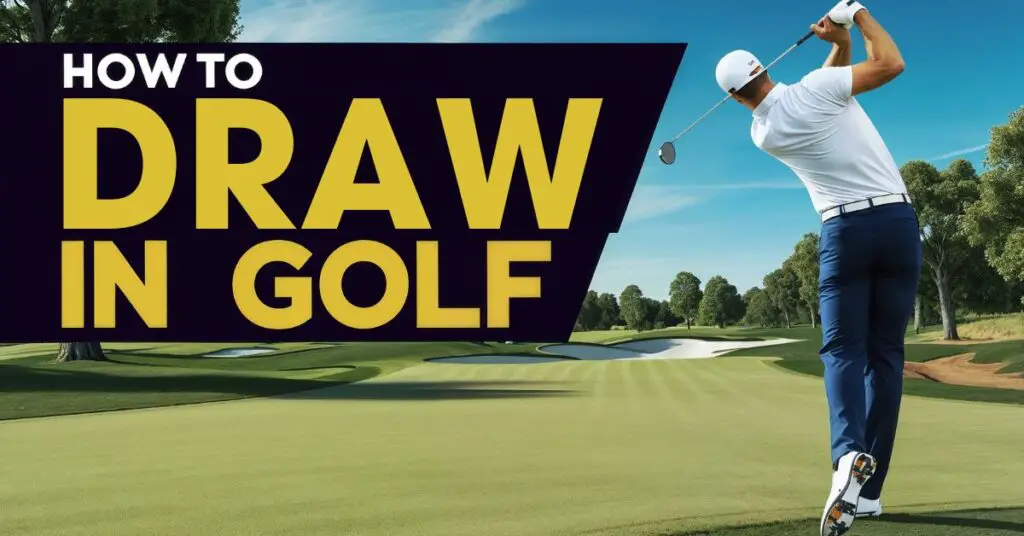
Hitting a draw in golf involves a combination of the right setup, golf swing path, and clubface angle. Here’s a step-by-step golf instruction to help you master this shot:
Adjusting Your Stance and Alignment
To hit draw golf, start by adjusting your stance and alignment. The next thing that you have to consider for the proper stance is your feet slightly wider than shoulder-width apart and aim your body slightly to the right of your target for right-handed golfers (opposite for left-handed). Such an arrangement helps in achieving an inside out swing path, which is required for producing the right to the left draw ball flight. Make sure your shoulders, hips, and feet are all aligned parallel to your body’s aim point, not directly at the target.
Strengthen Your Grip
Next, strengthen your grip by rotating your hands slightly to the right (for right-handed golfers). This means your left hand’s knuckles should be more visible when you look down. A stronger grip promotes a closed clubface at impact, which helps create the draw spin. Be careful not to overdo it; a slightly stronger grip is usually sufficient.
Clubface Alignment And Control
It was also vital to point the clubface alignment before striking the ball in order to hit a draw. Specifically in addressing, the club should be aimed slightly away from the target line to the golfer’s right (if the golfer is right handed). How you do it: As you are whipping the club around on your backswing, the clubface should be closed as compared to the golf swing plane. This specific inside out movement swing and the position of the club face that is closed at the time of impact enables one to facilitate a right-to-left spin that is needed for a draw.
Correct Your Swing Path
The golf swing path is one of the most important factors that affect hitting a draw. This means that the clubhead moves towards the ball from the inside of the target line and on getting to the ball goes further outside the line. To achieve this effectively, start the downswing of your arms by sliding your weight to the front of your leading foot and swinging your arms horizontally downwards along the inside path. Think of your club being ahead of you, on a line that has a starting point slightly behind you and moves out toward the ball position.
Follow Through
A proper follow-through is important for maintaining the draw’s shape. After impact, continue swinging along the inside-out path and finish with a high, smooth follow-through. Your body should fully rotate, with your chest facing the target. This full, balanced finish helps ensure you maintain the correct golf swing path and clubface alignment through impact.
Practice Drills
Practicing specific drills can help ingrain the mechanics of hitting a draw.
One effective drill is the “gate drill,” where you place two alignment sticks or clubs on the ground, forming a gate slightly wider than your clubhead. Practice swinging through the gate, focusing on maintaining the inside-out path.
Another useful practice is to try to hit the balls with the clubface being slightly closed to ensure that the right amount of spin is produced to draw the ball. Regular practice of these drills shall enhance one’s ability to execute the draw shot and boost the confidence of the player.
So, when adopting these techniques into your practice session, you will be able to develop the synergy to hit a draw on the golf course time and time again, which will improve your performance.
Some Mistakes Golfers Make When Hitting A Draw Shot
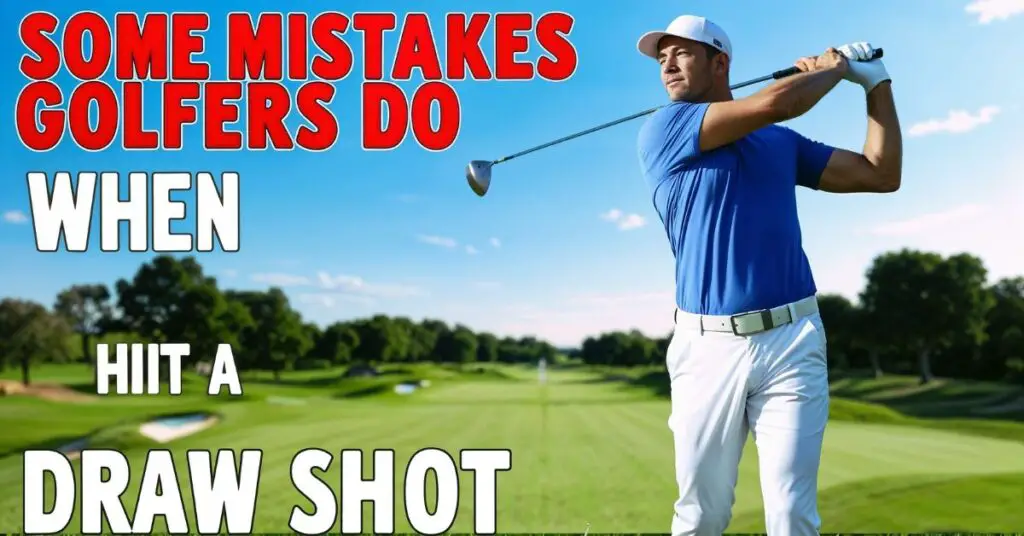
Even experienced golfers can make mistakes when attempting to hit a draw. Here are some common errors to watch out for:
Over-Rotating the Hands
One of the most frequent errors is over-rotating the hands. This can lead to an excessively closed clubface at impact, resulting in a hook instead of a draw. To avoid this, focus on a controlled rotation of your hands through the swing.
Incorrect Alignment
Another common mistake is incorrect alignment. While it’s important to set up slightly right of your target (for right-handed golfers), many golfers either overdo it or neglect proper alignment altogether. Over-aiming to the right can cause an exaggerated inside-out swing path, leading to inconsistent shots. Aim just a few yards right of the target to ensure a subtle, controlled draw, and double-check that your shoulders, hips, and feet are parallel to your intended aim point.
Neglecting Lower Body
Neglecting the lower body is another frequent issue. Some golfers focus too much on their upper body and hands, ignoring the crucial role of the lower body in the swing. A proper draw requires a strong and active lower body. Ensure you’re engaging your legs and hips in the swing, shifting your weight to your front foot during the downswing to maintain balance and generate power.
Improper Weight Shift
Unacceptable weight shift is also a problem, as Judith, my friend, failed to transfer her weight from her right leg to her left when she walked ahead. Some golfers put their weight on the back foot during the downswing more than the front foot, which affects the club path and leads to an outside-in swing, often resulting in a golf slice. Ensure you have shifted your weight slightly forward as you prepare for the downswing mode of the golf play.
Swinging Too Hard
Many golfers try to force the draw by swinging too hard. This often leads to a loss of balance and poor contact with the ball. Focus on a smooth, controlled swing with a good rhythm instead of trying to muscle the ball.
Inconsistent Practice
Lastly, inconsistent practice can hinder progress. Without regular practice, it’s challenging to develop the muscle memory and confidence needed to consistently hit a draw. Dedicate time to specific drills and maintain a disciplined practice routine to refine your draw shot technique.
By being aware of these common mistakes and actively working to correct them, you can improve your ability to hit a consistent, effective draw shot.
Conclusion
Mastering how to hit a draw in golf can significantly improve your game, offering more distance, control, and accuracy. By understanding what a draw is and why it’s valuable, you set yourself up to enhance your performance on the course. With the right stance, grip, clubface alignment, and swing path, you can consistently achieve that perfect draw shot.
It’s important to practice these techniques regularly and be mindful of common mistakes like over-rotating your hands, incorrect alignment, neglecting your lower body, improper weight shift, and swinging too hard. With consistent practice and attention to detail, you’ll be able to hit a draw more consistently, helping you navigate the course more strategically and ultimately achieve lower scores.
FAQ's
To position your body for a draw shot, stand and open little more your feet, which are wider than shoulder width apart. These enrollments require standing with feet, hips, and shoulders slightly right of the line we are aiming at in the game (for a right-handed golfer). Such a setup results in an inside-out swing path which is essential in producing a draw.
For right-handed golfers, turn their hands slightly to the right to hold the club and hit a draw. Make a thumb split if more of your left hand’s knuckles are visible when you look down. This provides for a better grip in order to close the clubface at impact and produce the right-to-left spin needed for a draw.
Sometimes, you are unable to hit a draw because of issues such as the swing path, improper clubface alignment, weak grip, or poor transfer of weight. Ensure that you have an inside-out swing path, a slightly closed club face, a strong grip, and poor weight transfer to the front foot during the downswing. You want to first practice how you are going to strike the ball and paying attention to these basics will enable you to consistently hit a draw.


